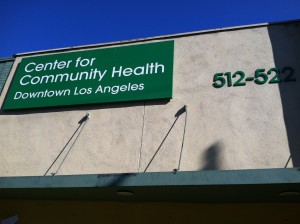Under the new law, the clinic will get reimbursed for more of the patients it already sees -- and for many of the new patients it expects to see. About a million more Angelenos are expected to get health insurance. Studies show that people visit the doctor more often when they’re insured. Community health centers have been planning for an explosion of new patients for several years.
With more reimbursements for newly insured patients, Gregerson and his team will be able to hire more employees, which, in turn, will allow his clinic to serve more patients. He also expects clinics to deliver a higher level of service and higher quality of care because of increased competition for patients.
“For the health center, the things that we’ve already put in motion will continue to run the course,” he says. “The creating of new programs, money that’s been spent on remodeling and hiring new people, will move forward and will even accelerate.”
As I reported in a story for KPCC Southern California Public Radio, Federally-Qualified Health Centers (FQHCs) like this one have already been ramping up their services and sites. They have become the darlings of the Affordable Care Act, with their patient-centered medical home team approach.
“It improves their attachment to the clinic because they’re not only attaching to a physician, they’re attaching to a whole team,” says Al Ballesteros, CEO at JWCH Institute. “Their mental health, physical health, their nursing needs, their laboratory needs, their specialty referral needs, their needs for benefits, their needs for housing access, (are) all handled by a team.”
Ballesteros says community health centers help monitor chronic diseases, focus on preventive care and keep people away from expensive emergency room visits.
The JWCH Institute hasn’t been the only FQHC ramping up. Advocates say that the recession has introduced middle class Americans to community health centers.
In California, the number of patients seen at FQHCs rose from 2.7 million in 2009 to 3.1 million in 2011.
Nationwide, patient numbers are expected to jump from the current 20 million to 40 million by 2015.
As for JWCH, its centers have been bombarded. In 2009, JWCH clinics provided 59 thousand primary care visits. They expect to have almost twice that number by year’s end.
“We started out here eight years ago with a clinic down here,” says Gregerson of the Skid Row location. “And just because of the demand, we’ve added a clinic in Bell Gardens, in Norwalk, in Lynwood. We just opened one in Bellflower about six or eight months ago.”
We’re all human,” he says. “Everybody deserves to be taken care of.”
